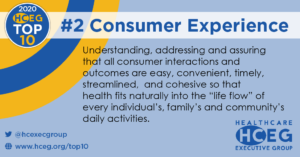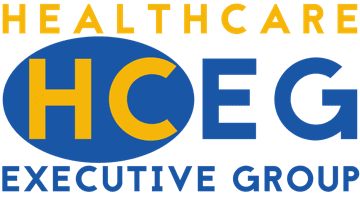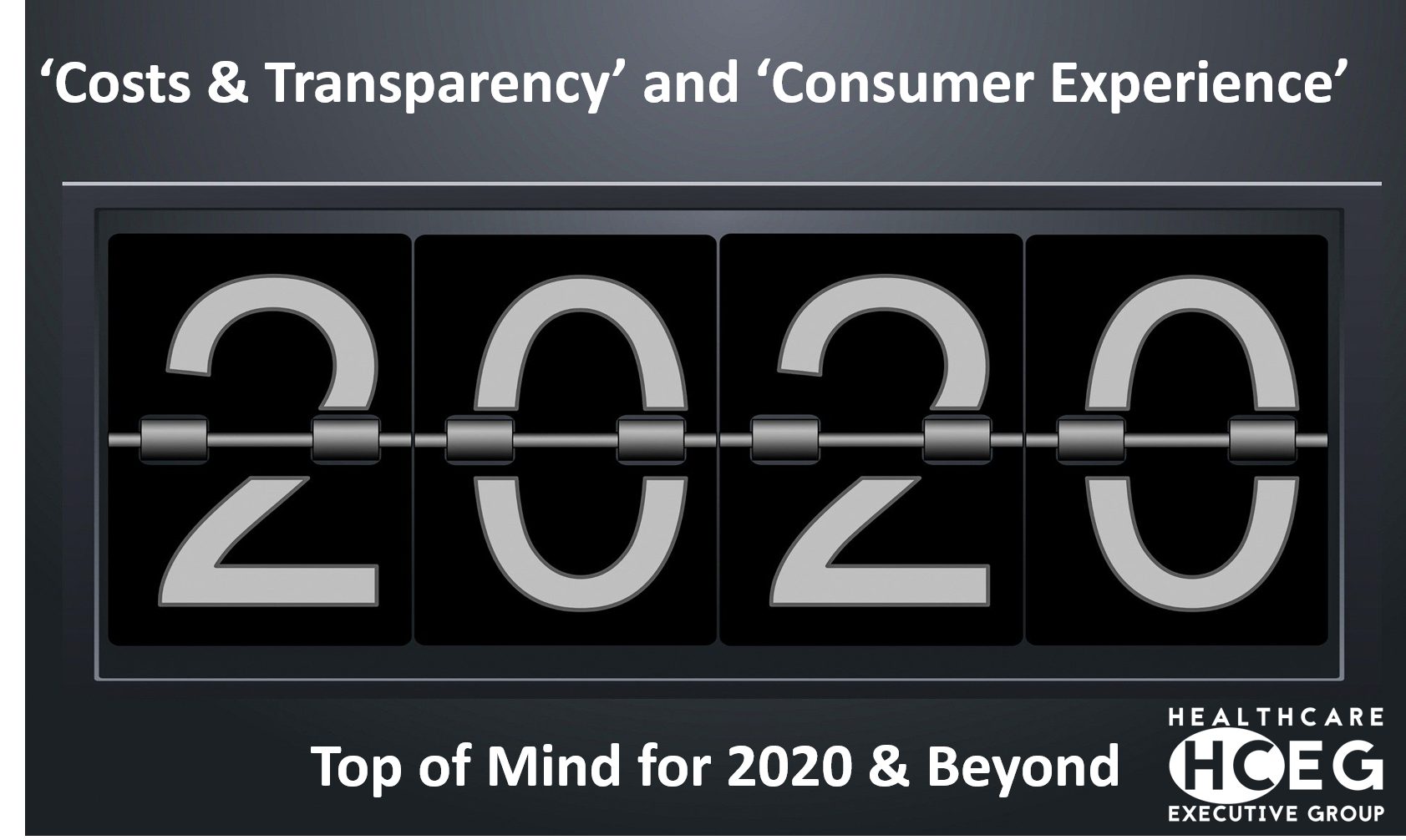
‘Costs & Transparency’ and ‘Consumer Experience’ are ranked in the two top spots on the 2020 HCEG Top 10 list of challenges, issues, and opportunities facing healthcare executives in 2020. These two areas of focus for health plans, health systems, and providers – risk-bearing or otherwise – are also frequently referenced on the various lists of ‘Healthcare Predictions & Trends for 2020.’
Rising Costs & Increasing Patient Responsibility for Payment Drive Focus
In a presentation at this week’s 2019 WEDI Winter Conference, Dan Mendelson Founder of Avalere shared some eye-opening facts and statistics that underscore why “Cost & Transparency” is ranked as the top issue facing HCEG member organizations.
- 84% of consumers believe drug prices are unreasonable
40% of Americans have saved enough to cover a $1,000 emergency
- 57% of employees are offered a high deductible plan
- $13K Average employee health benefit cost
- Affordability is #1 issue for Democrats (45%) & Republicans (30%)
Higher premiums, higher deductibles, increasing co-insurance, and surprise medical billing are four trends that really took off about a decade ago and show no signs of slowing down. See more presentations from the 2019 WEDI Winter Conference here.
Strategies to Improve Transparency and Lower Costs
This time of year all the experts, thought leaders and prognosticators are making their predictions about 2020 and beyond. And Cost, Transparency, and Consumer Experience are frequently referenced items on those lists. The following are some of the more detailed predictions, strategies, and tactics to address the growth of medical and pharmaceutical costs and improve transparency and access.
- Simplify explanation of benefits communications and simplify terminology
- Provide members and patients with data that is understandable and usable in a secure and private manner
- Making data available for review by independent 3rd parties
- Merge clinical, financial, and operational data with CRM insights to enable greater transparency and enhance customer experience
- Deploy and support ‘Local Market Relationship Liaisons
- Develop a culture of transparency to more openly share information on the following:
- Medical and pharmaceutical pricing
- Payments and incentives offered to physicians for prescribing drugs
- Results of clinical trials
All of the above demands the convergence of digital health technology with human needs and wants in a trust-based, member/patient-centered model supporting and balancing person-to-person engagement.
RELATED: “People Hate Shopping for Health Insurance”
Consumer Experience: Balancing Person-to-Person Engagement with Technology
Over the past five years, Consumer Experience has ranked in the #2 spot on HCEG’s Top 10 list four times. HCEG defines Consumer Experience as “Understanding, addressing and assuring that all consumer interactions and outcomes are easy, convenient, timely, streamlined, and cohesive so that health fits naturally into the ‘life flow’ of every individual’s, family’s and community’s daily activities.”
As with ‘Costs & Transparency,” many of the lists of predictions and trends for 2020 and beyond include Consumer Experience as a prominently ranked item. The following are some ideas, strategies, and tactics healthcare organizations may consider to improve the healthcare consumer experience:
- Offer personalized mobile apps to leverage user-centric relevant notifications
- Utilize blockchain technology to create a transparent and tamper-proof ledger of all member/patient transactions
- Invest in member enrollment and patient recruitment programs
- Service members and patients where they are outside the four walls of your office, hospital or practice
- Chatbots for self-service and scaling member/patient interactions
- Virtual reality providing an immersive experience for members and patients. A virtual tour of a health facility, demonstrating an example procedure and helping patients cope with pain are some examples
RELATED: Did CMS Just Declare 2021 ‘The Year of the Consumer?’
Offering a personal experience when it comes to healthcare is vital and today’s healthcare organizations must focus on utilizing digital health technologies to enhance and advance the experience of the healthcare consumer. Given the entry and disruption from non-traditional players like Amazon who’ve set the standard for consumer expectations, not doing so will surely result in extinction.
More on Costs, Transparency, and Healthcare Consumer Experience
Next week HCEG members and select sponsor partners will be presenting at the 2019 AHIP Consumer Experience & Digital Health Forum in Chicago. HCEG Executive Director Ferris Taylor and Ian Gordon, Former Sr VP & COO 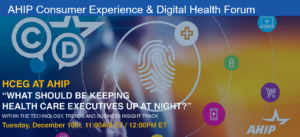
HCEG member Sheri Johnson, AVP of Member Enrollment and Billing at UCare will present Creating Impactful Member Enrollment Correspondence on December 10th at 3:15 pm. Learn more here.
And Mark Nathan, CEO & Founder of HCEG sponsor partner Zipari, Inc. will present Revolutionizing Consumer Experience With a Single Platform Built for Health Insurance on December 10th at 4:10 pm. Learn more here.
Join senior healthcare leaders and line-of-business executives and leave Chicago with guidance for managing the implications that reducing costs, improving transparency, and enhancing consumer experience portends for your IT investment priorities and implementation strategies.
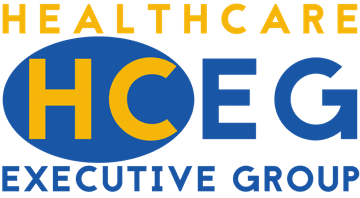
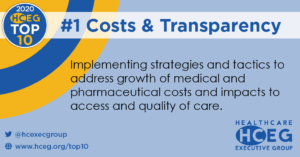 40% of Americans have saved enough to cover a $1,000 emergency
40% of Americans have saved enough to cover a $1,000 emergency